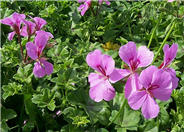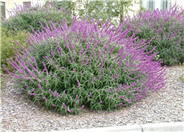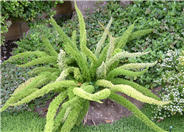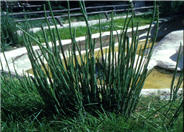
Common name:Ivy Geranium
Botanical name:Pelargonium peltatum
Clouds of single or double flowers are produced from spring through fall on this plant, which should be planted in areas that receive afternoon shade in warm inland valleys. Foliage resembles ivy (pointed lobes) and are bright green and glossy. Ivy Geranium looks great in hanging baskets, window boxes or in planters. Do not use for erosion control.

Common name:Mexican Bush Sage, Velvet Sage
Botanical name:Salvia leucantha
The Mexican Sage is a bushy shrub that grows 3'-4' tall and wide. It has hairy white stems, gray green leaves and velvet-like purple flower spikes that bloom summer through fall. This shrub tolerates sun, light shade, little water, and is hardy to 15 degrees F. The Mexican Sage is drought tolerant and attracts hummingbirds. -Cornflower Farms

Common name:Evergreen Candytuft
Botanical name:Iberis sempervirens
This Evergreen Candytuft is a compact plant that grows 12"-18" tall. Its leaves are dark green in color; in the early spring, it exhibits clusters of pure white flowers that are borne at branch ends.

Common name:Myer's Asparagus
Botanical name:Asparagus densiflorus 'Myers'
An evergreen groundcover, the 'Myers' also makes an excellent hanging basket plant when larger in size. Its formal looking fronds have an even, spiral arrangement of leaflets. It is damaged by severe frosts, and looks best with at least occasional watering. -Monterey Bay Nursery

Common name:Horsetail Reed
Botanical name:Equisetum hyemale
This reed-like plant bears dark green, jointed stems to 3'-4' tall. It should receive sun to part shade with regular summer watering. The reed grass can be extremely invasive and is best when used in pots or when confined by a barrier. As such, it can be extremely effective as an accent plant. While tolerant of wet conditions, the most successful plantings are those with average soil moisture. Tall grasses are highly combustible. -Monterey Bay Nursery
| Designer: | Geranium in Raised Planter |
Photographer: GardenSoft |
Soils and Compost:
Practice grass-cycling by leaving short grass clippings on lawns after mowing, so that nutrients and organic matter are returned to the soil.
Water Saving Tip:
Fix leaking sprinklers, valves, and pipes.
One broken spray sprinkler can waste 10 gallons per minute - or 100 gallons in a typical 10 minute watering cycle.
Integrated Pest Management:
Attract, or buy beneficial insects such as ladybugs and lacewings to control pest outbreaks in your garden.
